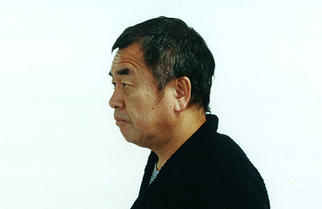
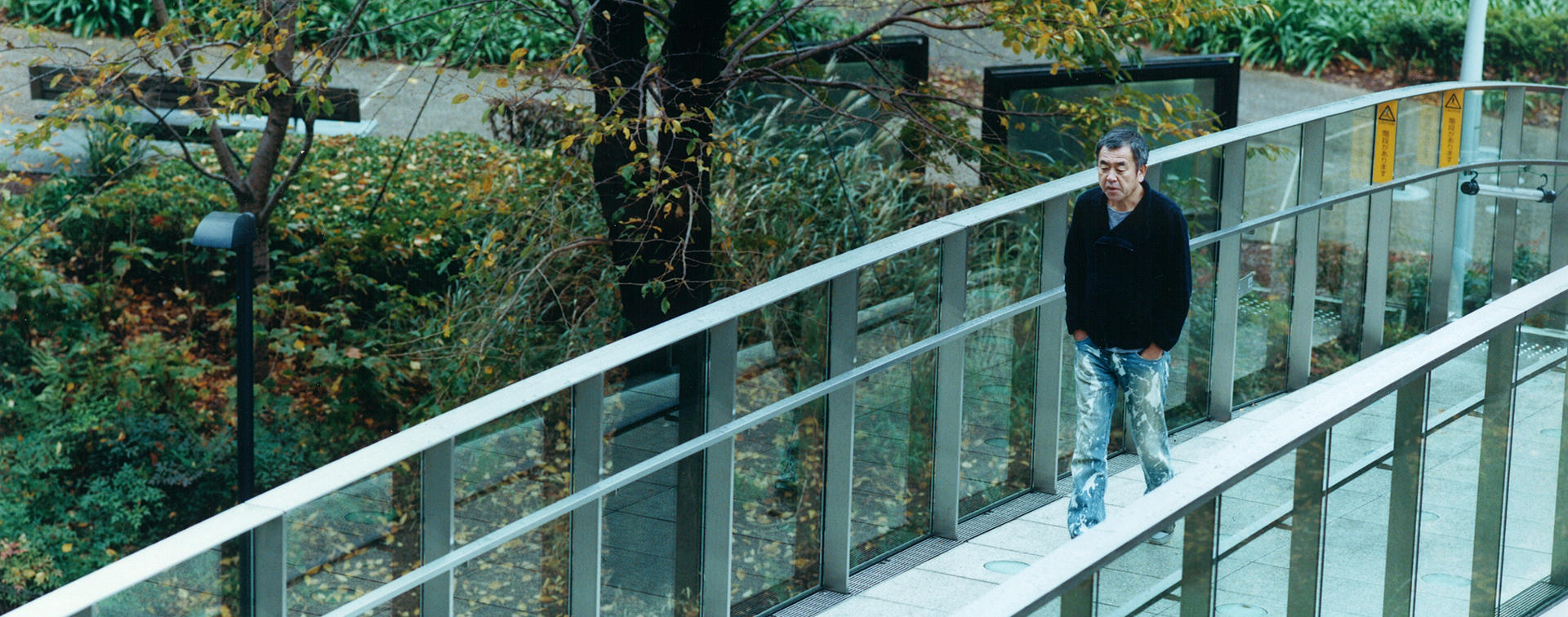
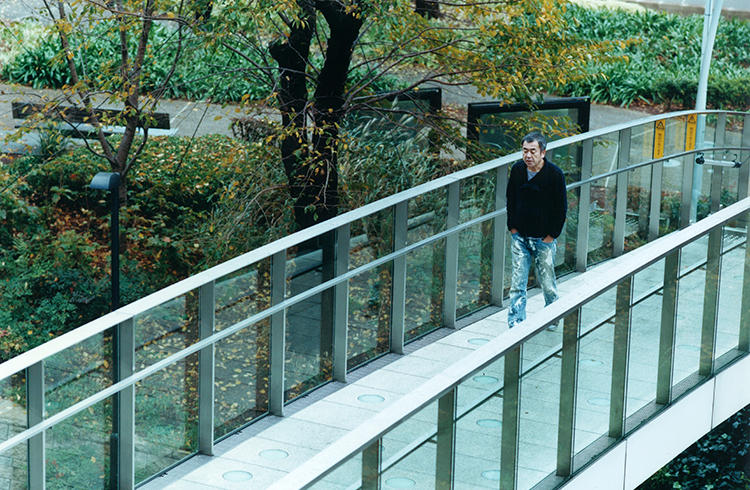
How would you turn Roppongi into an area of Design & Art?
Renovate small and building in Roppongi for artists and designers
Kengo Kuma is an architect who is busy with projects both at home and abroad, including the Kabuki-za currently being rebuilt, and the new Victoria and Albert Museum to open in Scotland. Kuma also designed the Suntory Museum of Art and has strong ties to Roppongi. We asked Kuma about his views on Roppongi and the role of architecture in turning Roppongi into an area of design and art.
The duality of a residential area with entertainment quarters
My ties to Roppongi started when I was in graduate college. I studied at the research room of Professor Hiroshi Hara at the University of Tokyo's Institute of Industrial Science which was then located in Roppongi. One of the reasons I wanted to study at the institute was because it was in Roppongi. I lived in Yokohama and while the Hongo campus in Bunkyo-ku seemed far-off and quite calm, I thought Roppongi would be fun. (laughs)
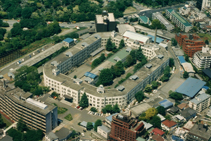
Institute of Industrial Science, the University of Tokyo
An institute for comprehensive scientific research on production. It is Japan's largest university research institute and also among the biggest in the world. The campus was situated in Roppongi for nearly 40 years before being relocated to Komaba in 2001. (Its former site is where the National Art Center, Tokyo now stands.)
© Institute of Industrial Science, the University of TokyoSo I'm familiar with the area stretching from Roppongi to Aoyama-dori. I had my office in that neighborhood for a long time; it's an area in Roppongi I like best. It's a residential area which also has amusement quarters and its appeal lies in that duality. The center of Roppongi is now filled with entertainment spots, but I think it would be nice if we could make a town which has more residential areas.
Things that spill out from the center
Roppongi already has central places like Tokyo Midtown, so I think it's important to make the area more interesting by having things which cannot be contained in those central places and which ooze out - spill out. And to make Roppongi an area of design and art, you also need to have places for creative people. For example, small and old buildings could be renewed for artists and designers who are just starting their careers. As an architect, I have a strong interest in that kind of project.
First of all, selecting the right buildings is important; it won't do to pick any old building. You need to pick interesting spots and be strategic like playing a game of "shogi" (Japanese chess). It's similar to "shinkyu" (acupuncture and moxibustion) where you need to know the pressure points. Towns have pressure points and if you could massage the pressure points of Roppongi, you will be able to transform it. But to understand the pressure points of a town, you have to walk through its streets. You need to not only walk, but eat and drink in the establishments and fully experience all the aspects of the town night and day, and then you can get a general feel of it.
Architects are people who renovate
When renewing an old building, it's vital to think about how you can inherit and preserve its shabbiness. I think the shabbiness of buildings has to do with their scale, the materials used, and the passing of the years. These factors are probably what make a place comfortable to live in for us human creatures. When you add something new to a place, many things get lost. Development plans inherently have a destructive power. From now on though, we should think about having plans that preserve the elements of shabbiness.
There is a lot of attention now on renovation, but I think all development plans are essentially about renovation. Even when you are constructing a new building, you are making something on land that existed before, so you're actually renovating the land. And in renovating, you inherit something from that place. So in that respect, making a new building is about renovation. I think our jobs would be much easier to understand if people thought of architects as renovation designers.
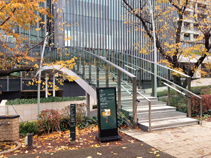
Garden Arch in Tokyo Midtown
Pictures with Kuma were taken on the Garden Arch, the bridge connecting Midtown's garden and the Suntory Museum of Art. This bridge, also called "Taiko-bashi (a drum-shaped bridge)" is designed by Kuma.

Being involved with a building after its completion
If there was a project to renovate the old buildings of Roppongi for artists and designers, and if I were to be in charge of design, I would love to be involved in running the places after they have been completed. For example, it would be great if we could build a café on the 1st floor and I were to operate it. (laughs) Instead of having nothing to do with a building after it has been built, it's better if you can be involved with it. I think the ideal architectural design is like to build one's own home. You invite a lot of people. And you play the host and entertain them. In that aspect too, I think the ideal architecture is based on the home.
Even an office building is modeled on the home. In the 19th century, a room that was used like an office in the household became larger, and eventually became the office building we know today. A place becomes a place of communication only when there are actually people there. When there are no people, the spirit of the building vanishes.
Buildings and towns are living things
Doing my work designing homes, I know how drastically different the atmosphere of an unoccupied house can be. The rooms may not be dusty, but after a while, you can tell that people don't live there. Buildings are "living things", and so are towns. It seems that when people who built the towns stop being involved with them, the life of the towns go out. So I think people engaged in development of buildings and towns should make sure that the building and towns stay alive.
Five years have passed since I designed the Suntory Museum of Art, but I still keep in touch with the people at the museum. That has helped me maintain my ties with Tokyo Midtown; I also designed a few establishments in Roppongi, and by coming here, I've been able to make new acquaintances. I think it's the continuance of the relationships between all kinds of people that give life to not only one building but to the whole town.
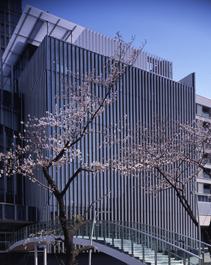
Suntory Museum of Art
An art museum that holds many exhibitions based on the concept of "Art revisited, beauty revealed". The museum moved to Tokyo Midtown in 2007 into a new building designed by Kengo Kuma. Designed to be like a "living room in the city", the fine use of space and the inspiring artworks on display offer serenity to visitors.
©Keizo Kioku/All Rights Reserved.Nature outshines manmade things
My favorite town is Edinburgh in Scotland. We are currently making a new center for Scotland's Victoria and Albert Museum. It's in a city called Dundee, but the meetings are often held in Edinburgh. Edinburgh is a mystical place - you get the feeling that goblins live there.
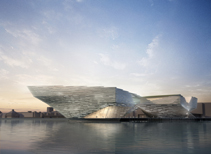
Victoria and Albert Museum
A national museum in London, England housing nearly 4 million articles of art and design, including contemporary and antique art. Collections in a wide range of genres have been donated to the museum. A new Victoria and Albert Museum is currently being constructed in Dundee, Scotland. Kengo Kuma's bold design proposal was chosen for the new building.
The shape of the Scottish land is interesting. Going about in a town, you might suddenly come upon a cliff. And there are all types of cliffs. Beside the Scottish Parliament Building designed by architect Enric Miralles, there is a rather frightening-looking natural cliff. You think why is there a cliff here? But with that before your eyes, you can tell that this cliff will outshine anything manmade, and you can see how intimidating nature can be to humans and what weak creatures we are.
The nature of Scotland is similar to the nature in Japan in some aspects. For example, Roppongi also has many cliffs. There was even a cliff in the middle of the grounds of Tokyo Midtown. Maybe in Japan, we have evened out the ground too much.
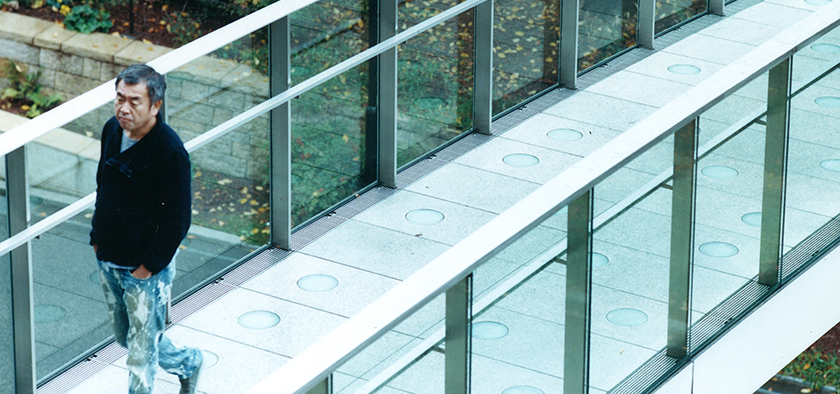
Your own little small spot in Tokyo
I think that in many ways, Tokyo is a very comfortable city to live in. There are many Japanese people who speak like commentators on a talk show and say that the landscape of Tokyo is terrible. But when you take a panoramic view, every city in the world has terrible landscapes and various other problems. Tokyo has a very good public transport system and you can move about easily. The best thing of all is that it is a city with diversity.
In the east, west and center of Tokyo, there are many small spots where you can enjoy yourself. This is a very unusual thing. All over the world, there are cities that have diversity, but there is only one place or just a few places in a city where people can go to for enjoyment. The appeal of Tokyo lies in the many places for enjoyment: you can find your own little spot, and once you deepen your ties with that spot, the city becomes much easier to live in.
"Ruffles" make a town easier to live in for its residents
I think that the small spots that are just right for you are like creases or ruffles. When there are ruffles, different things can co-exist. For instance, in the sea, lots of different creatures live in the polyps in sea anemones. A land that is extremely flat is not easy to live in, but a land with bumps and curves provide hiding places, and is a more comfortable habitat for living creatures.
Roppongi seems to be one of the places in Tokyo notably has many "ruffles." It's probably why I like Roppongi. Earlier, I talked the quiet neighborhood with the jovial entertainment spots. That kind of duality is made possible by "ruffles" and when a town loses those ruffles, it loses its appeal.
Leading the "material revolution"
As an architect, one of the things I'm interested in is materials. We're living in a time when a great change is taking place in architectural materials. In the 20th century, towns were basically made of concrete; almost all the buildings were built by fixing thin pieces of material on concrete. But when you look at human history, you see that this method is only about 100 years old. Before that, people made houses with wood or stones. The question now is how do we transcend the past 100 years of industrialization with concrete and go back to making buildings that are just right for people? We're at a turning point, and I hope to be able to play a leading role in the "material revolution."
Wherever you go, you find that there are certain materials in each region that have been historically used to make homes and which are particularly suited to that region. I'm keen to learn how each region has made their various "nests"; whenever I get a request to work on project in a region that is new to me, I always get the urge to go and see for myself, even when I feel that we might make a loss. (laughs)
I think there must be materials that are specific to Roppongi. There are times when you learn about the history of the materials and you find it difficult to believe - you wonder if it's some kind of joke. But it's important to cherish the story and to inherit it, because with the passing of time, history becomes more precious than ever.

Rebuilding of Kabuki-za (The 5th Kabuki-za)
Reconstruction work on the dilapidated Kabuki-za in Ginza began in 2011. In line with the aim to inherit tradition, the new Kabuki-za, designed by Kengo Kuma, preserves aspects of the former theater. Also comprising commercial facilities, it is scheduled to be completed in spring 2013.
©SHOCHIKU Co.,Ltd. ・Kabuki Za
Editor's thoughts
We interviewed Kuma-san in a meeting room at the Midtown Tower from which we could see the reddened leaves of the trees in Hinokicho Park. It was eye-opening to hear from Kuma-san, architect of so many works of architecture, that he thought of buildings and towns as living things. It made me see that buildings and towns are completed not when construction is finished, but when they are filled with people who go about their daily affairs. I would like to keep this important point in mind in achieving our aim to turn Roppongi into an area of design and art. (edit_rhino)




